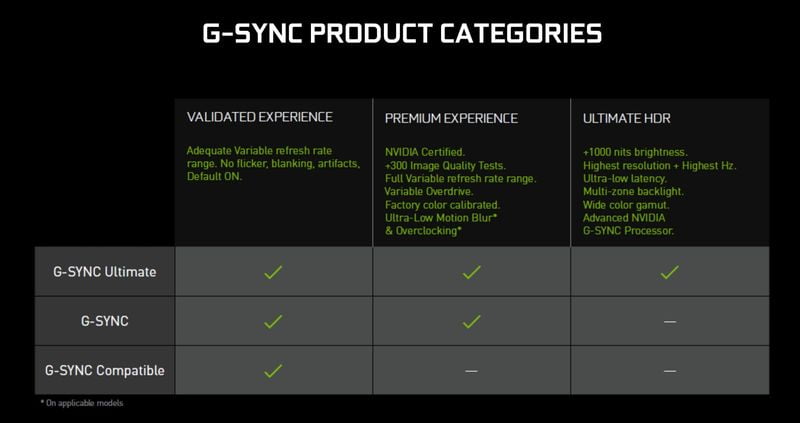Yesterday it was announced that NVIDIA had reduced the minimum requirements needed to certify G-Sync Ultimate monitors. Now, the company issued a statement explaining what happened.
But first, let’s put it into context. The problem started with a tweet from PC Monitors, who noticed that NVIDIA had included the ACER X34 S as a G-Sync Ultimate monitor. This monitor has a nominal brightness of 400 nits (550 maximum) which was not close to NVIDIA’s recommendation of “more than 1000 nits”.

In the end, it turned out that the green team recently changed its requirements for this certification, allowing more monitor manufacturers to obtain it. In other words, it seems to have been a marketing strategy.

NVIDIA’s response
NVIDIA issued a statement and explained the situation:
“Late last year we updated G-Sync Ultimate to include new display technologies such as OLED and next-generation LCDs.
All G-Sync Ultimate displays are equipped with Nvidia G-Sync processors to deliver a fantastic gaming experience that includes realistic HDR, stunning contrast, cinematic color, and ultra-low latency modes. While the original G-Sync Ultimate monitors were 1000 nits with FALD, the newest ones, like OLED, offer infinite contrast with only 600-700 nits. G-Sync Ultimate was never defined by nits alone nor was VESA DisplayHDR 1000 certification required. Conventional G-Sync displays also have Nvidia G-Sync processors installed.
The Acer X34 S monitor was erroneously listed as G-Sync Ultimate on the NVIDIA website. It should be listed as “G-Sync Compatible”, the page is being updated”.





